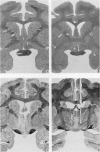Abstract
1. In the unanaesthetized rhesus monkey, 5-hydroxytryptamine (5-HT), catecholamines, acetylcholine or carbachol were micro-injected in a volume of 1·0 μl. or less through chronically implanted cannulae at eighty-six sites in the hypothalamus.
2. 5-HT in doses of 2-10 μg caused a long-lasting elevation in temperature which was dose-dependent. An anatomical `mapping' of the hypothalamus revealed that the hyperthermic action of 5-HT was localized to the anterior, pre-optic area directly ventral to the anterior commissure.
3. Noradrenaline in doses of 1-12 μg produced a dose-dependent fall in temperature of short duration. An anatomical `mapping' showed that the hypothermic action of this and other catecholamines was again localized to the anterior, pre-optic region.
4. Acetylcholine, alone or in a mixture with eserine, or carbachol caused a dose-dependent hyperthermia which was characterized by an intense rise of short duration and vigorous shivering. A `mapping' of this response revealed a diffuse patterning of sites throughout the hypothalamus which were sensitive to the application of acetylcholine and carbachol. However, in one circumscribed region at the junction between the posterior hypothalamus and mesencephalon, the two cholinomimetic substances caused a marked fall in temperature.
5. We conclude that 5-HT activates a cholinergic heat production pathway which projects from the anterior to posterior hypothalamus. Noradrenaline, on the other hand, blocks the hyperthermic action of 5-HT rather than activates the heat loss system. A chemically mediated heat loss pathway apparently does not exist in the hypothalamus.
Full text
PDF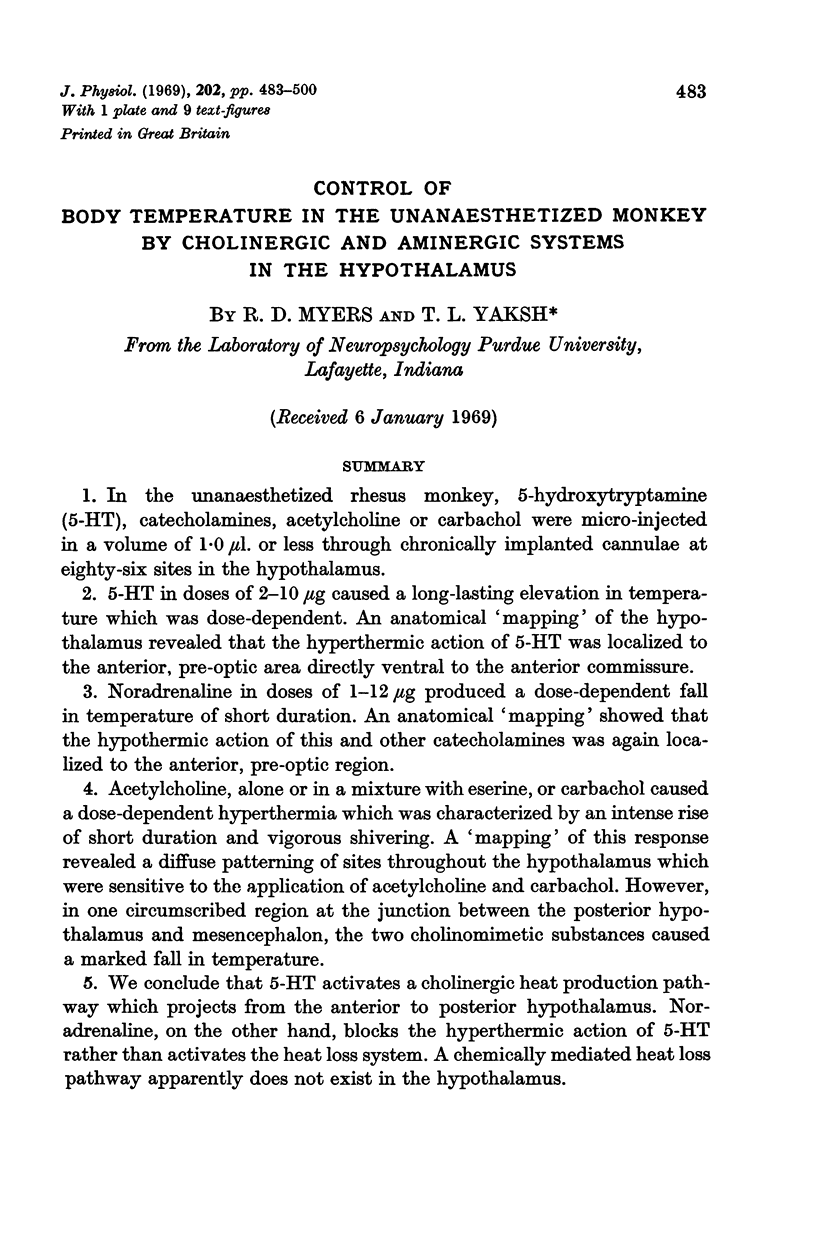

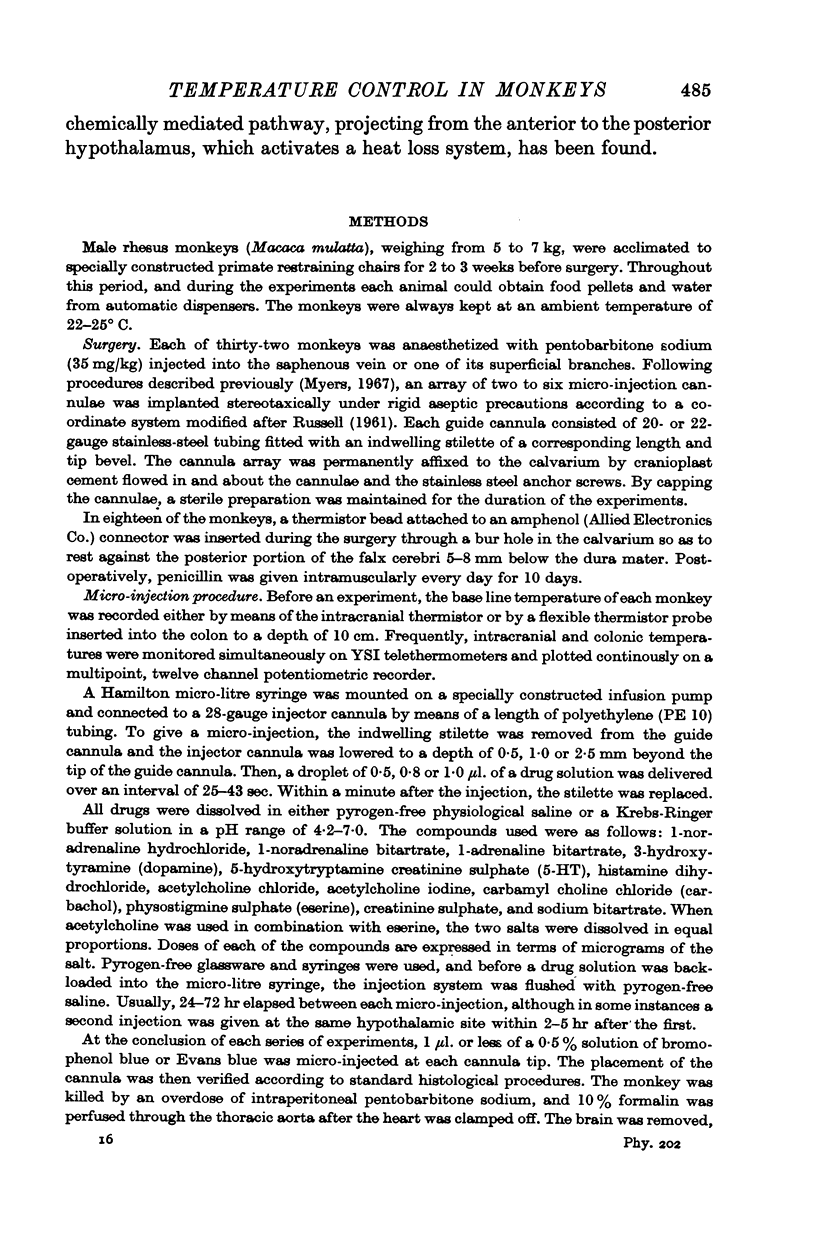
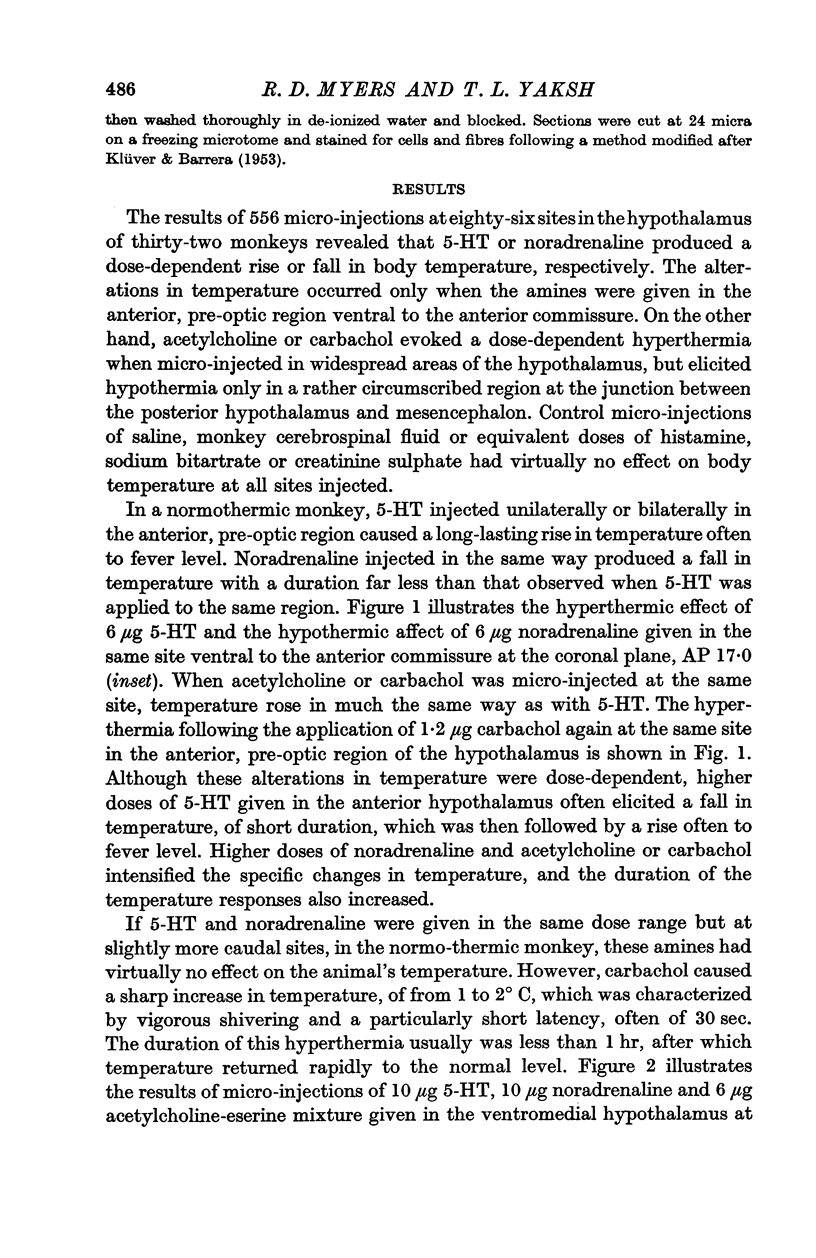

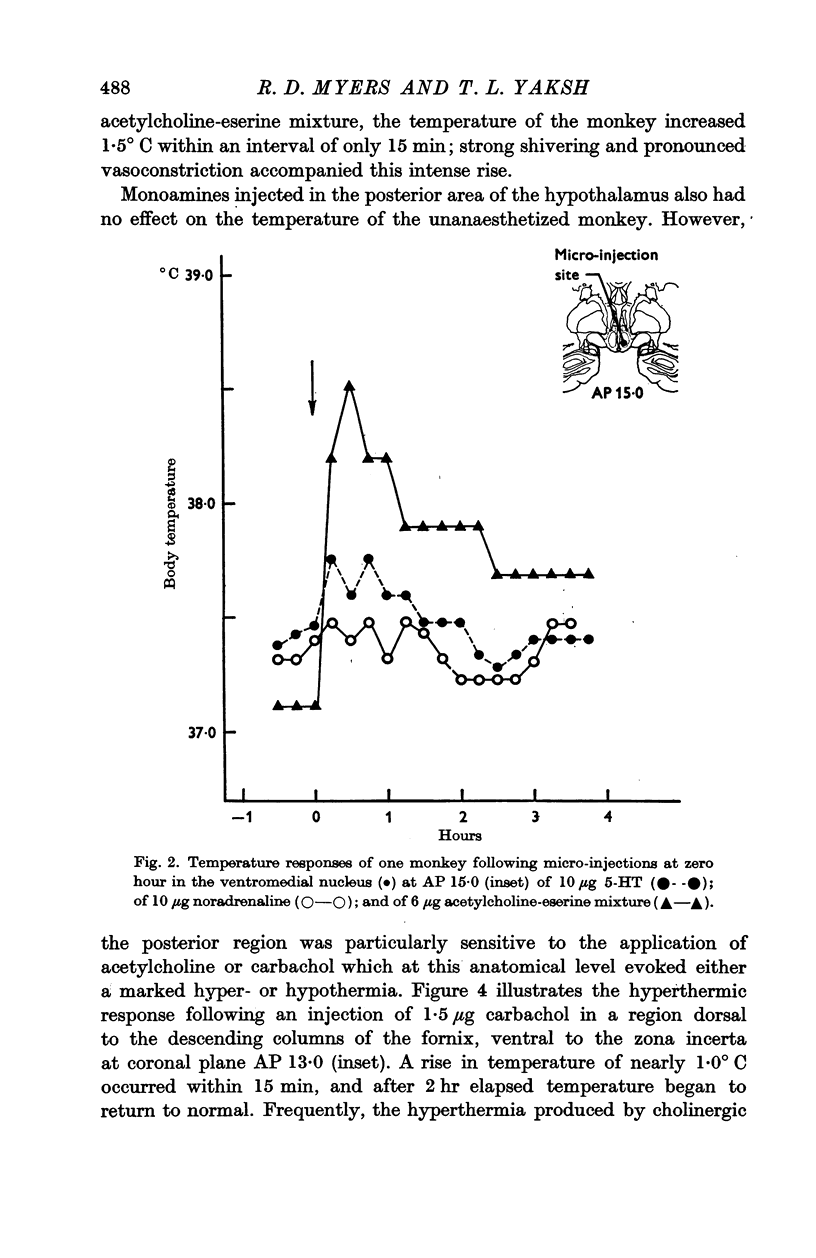

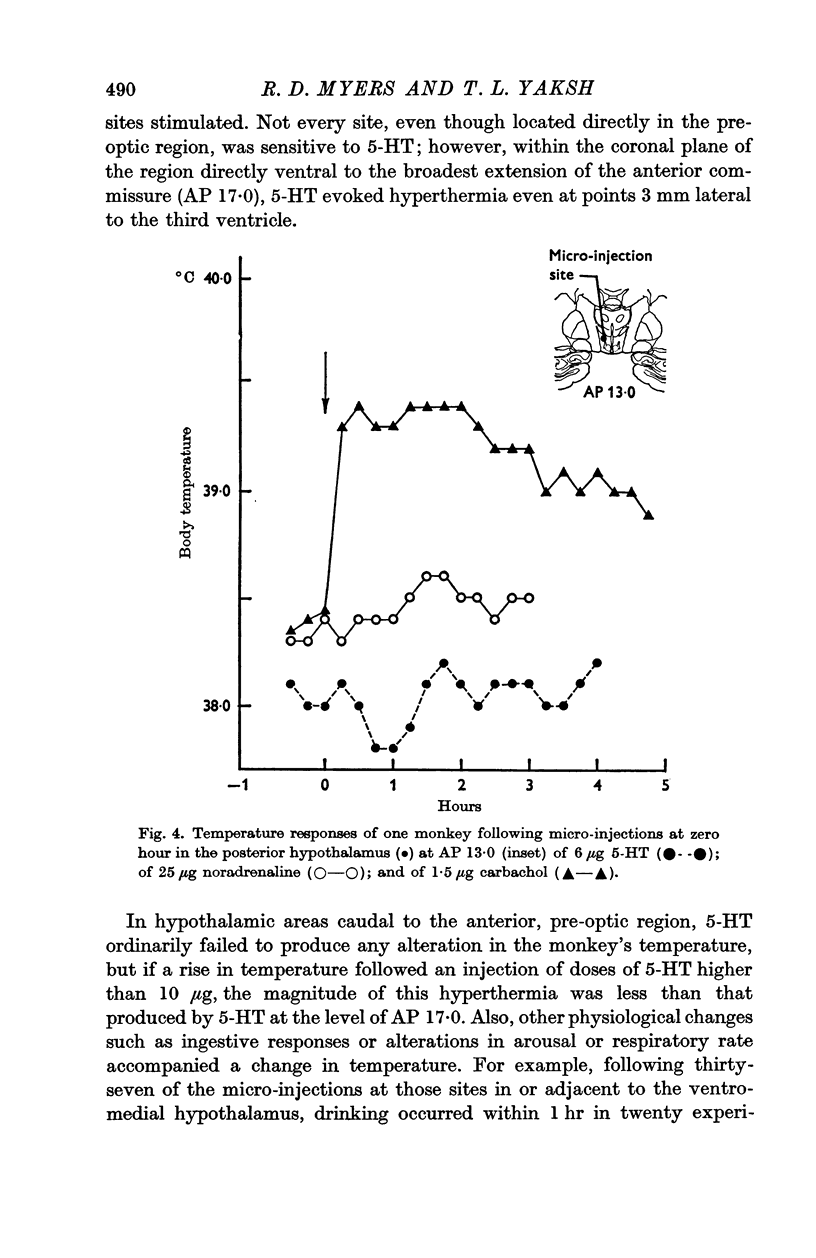
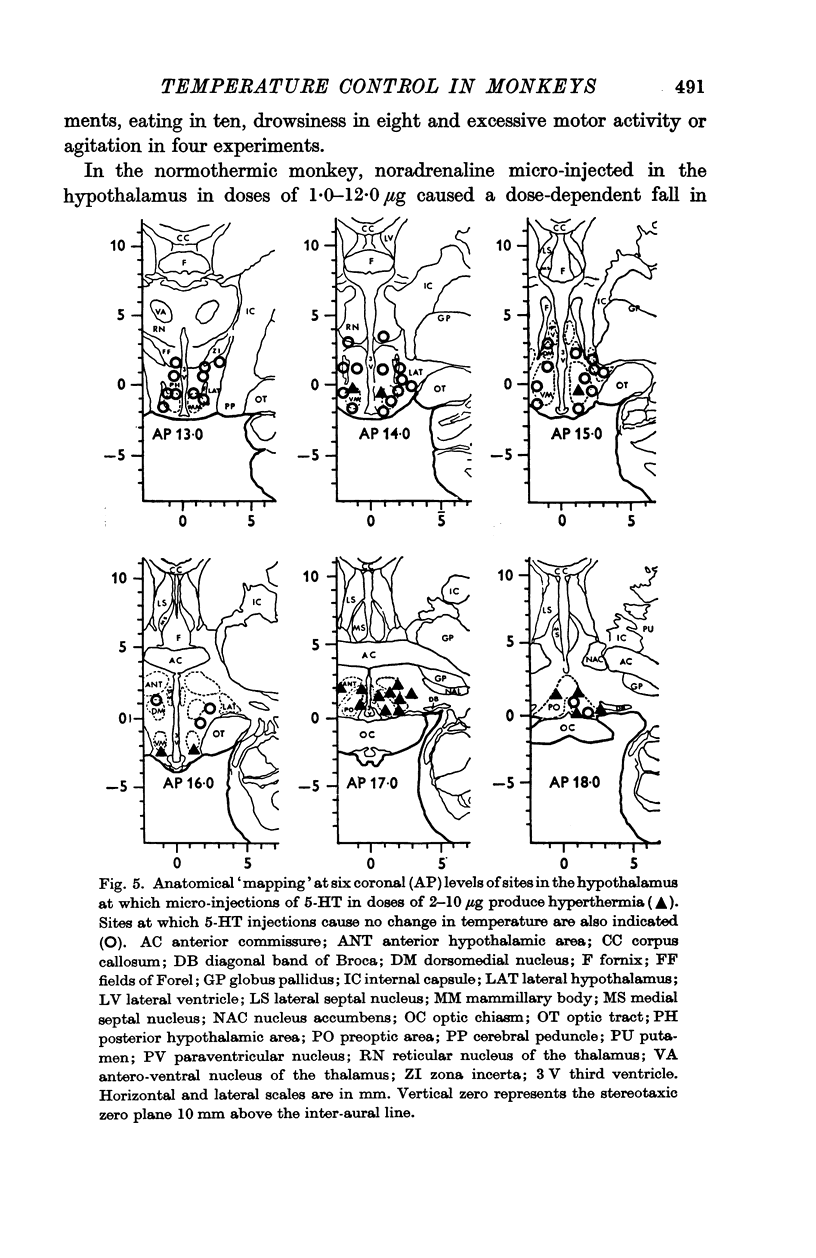

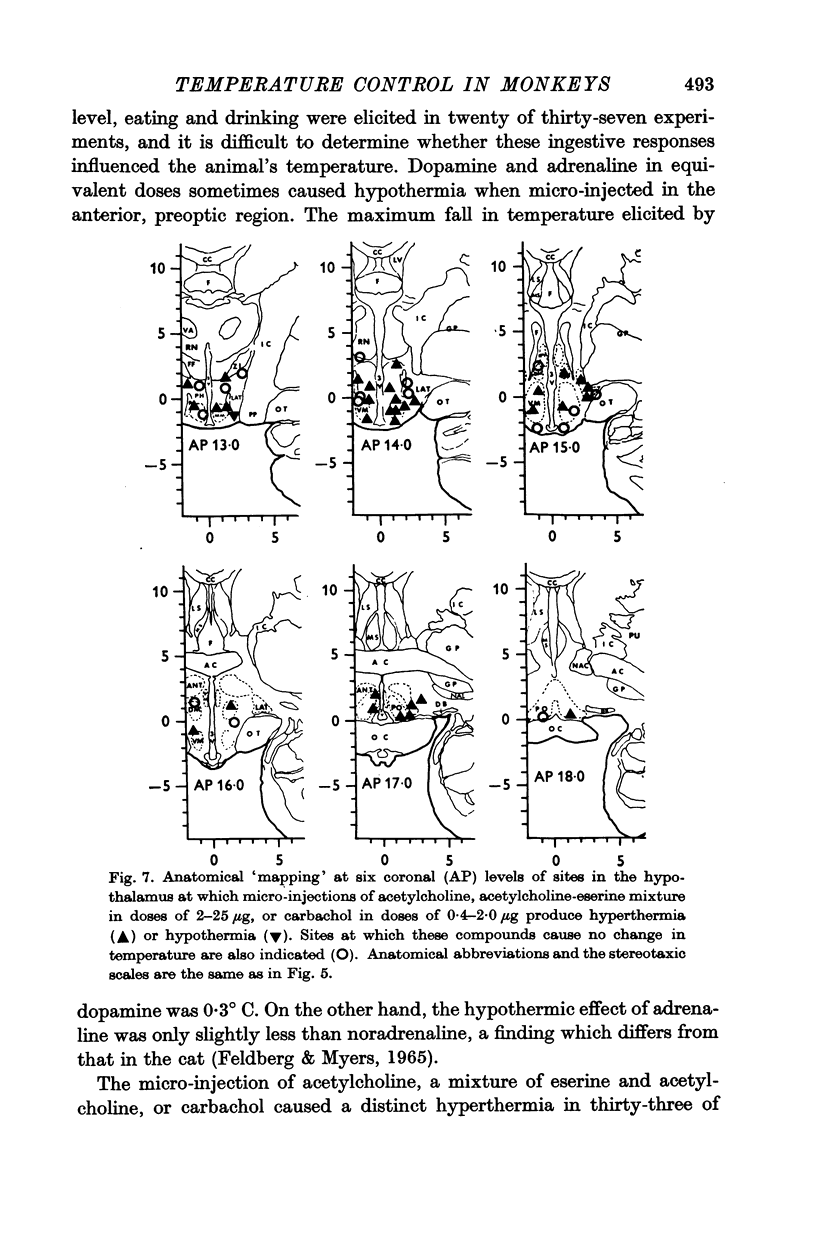
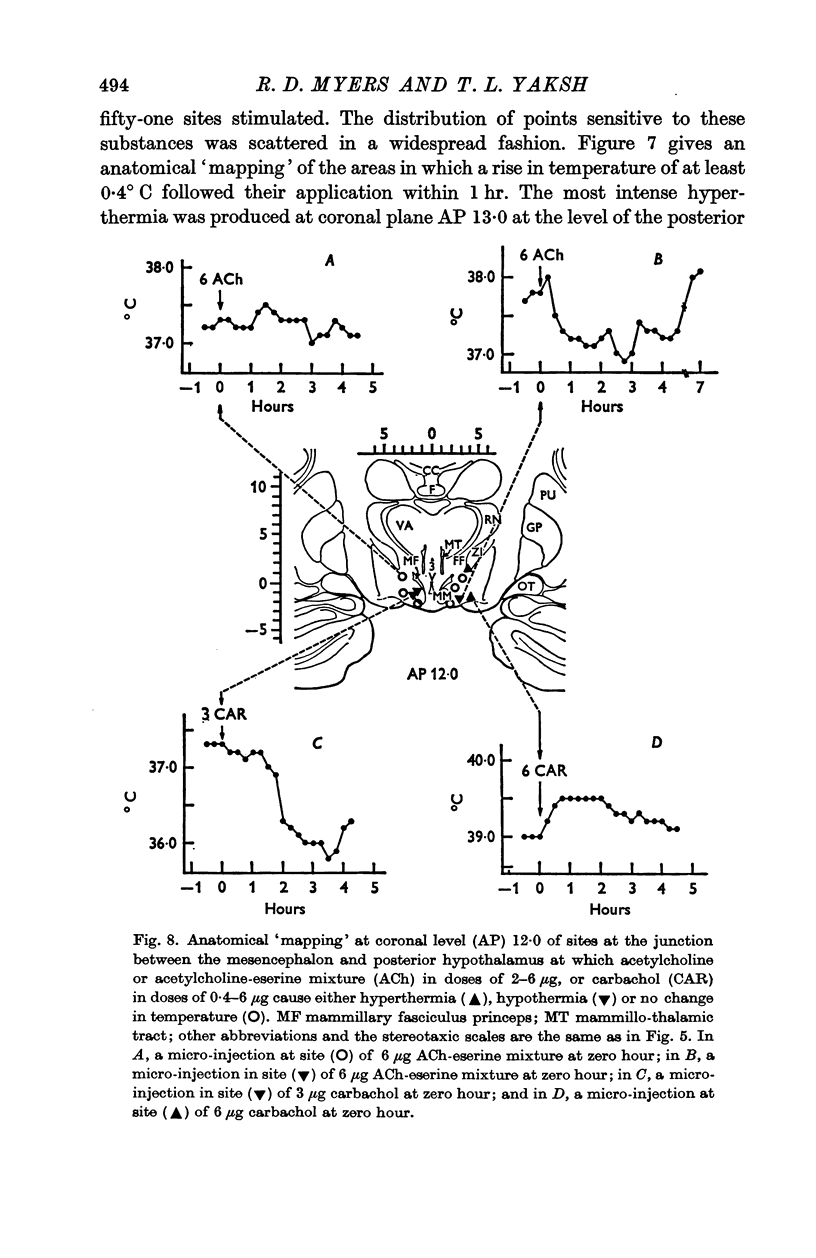
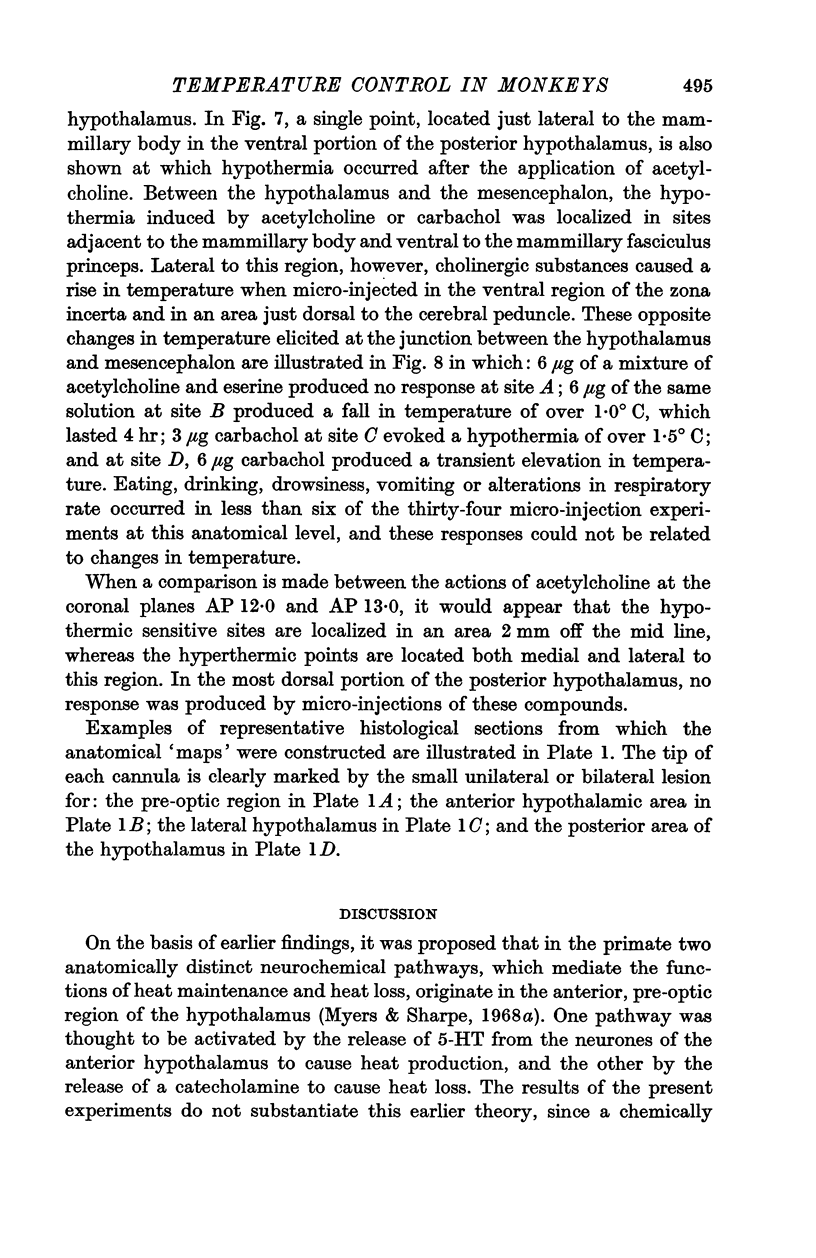
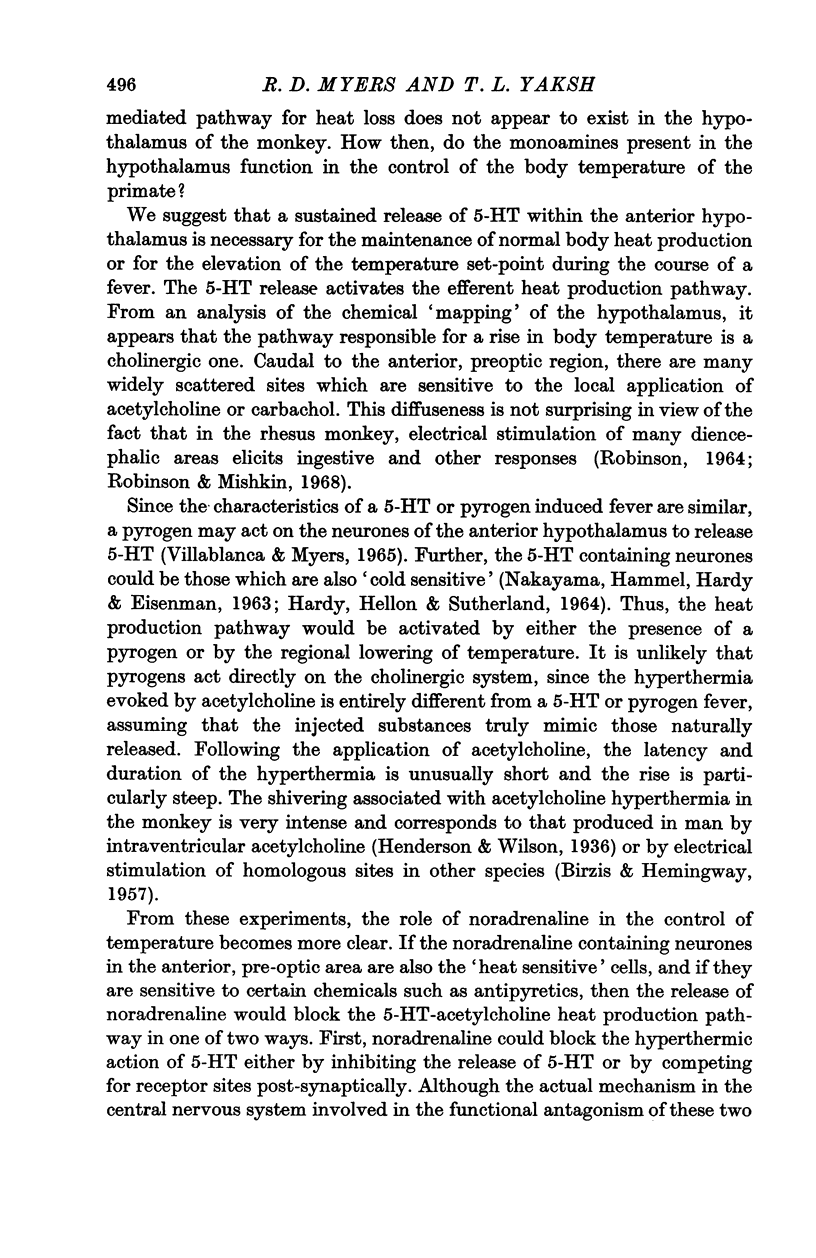
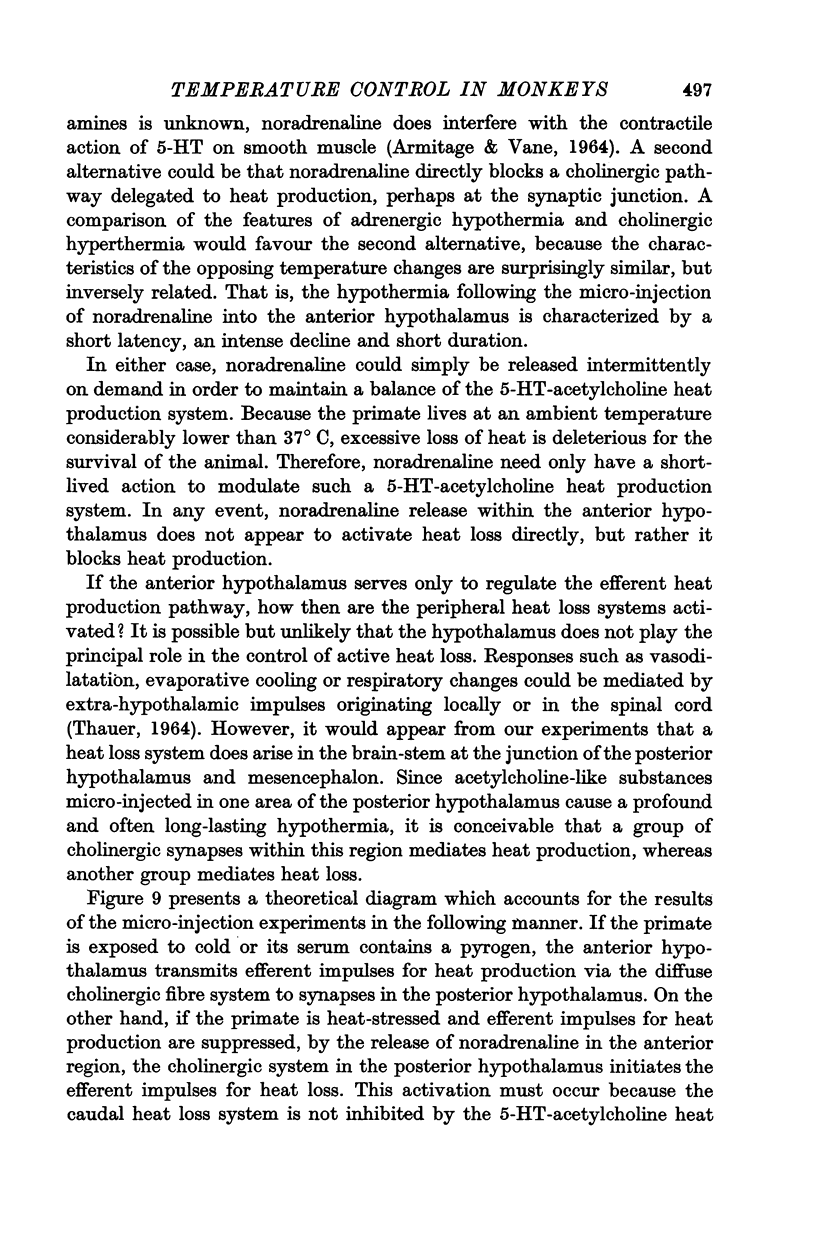
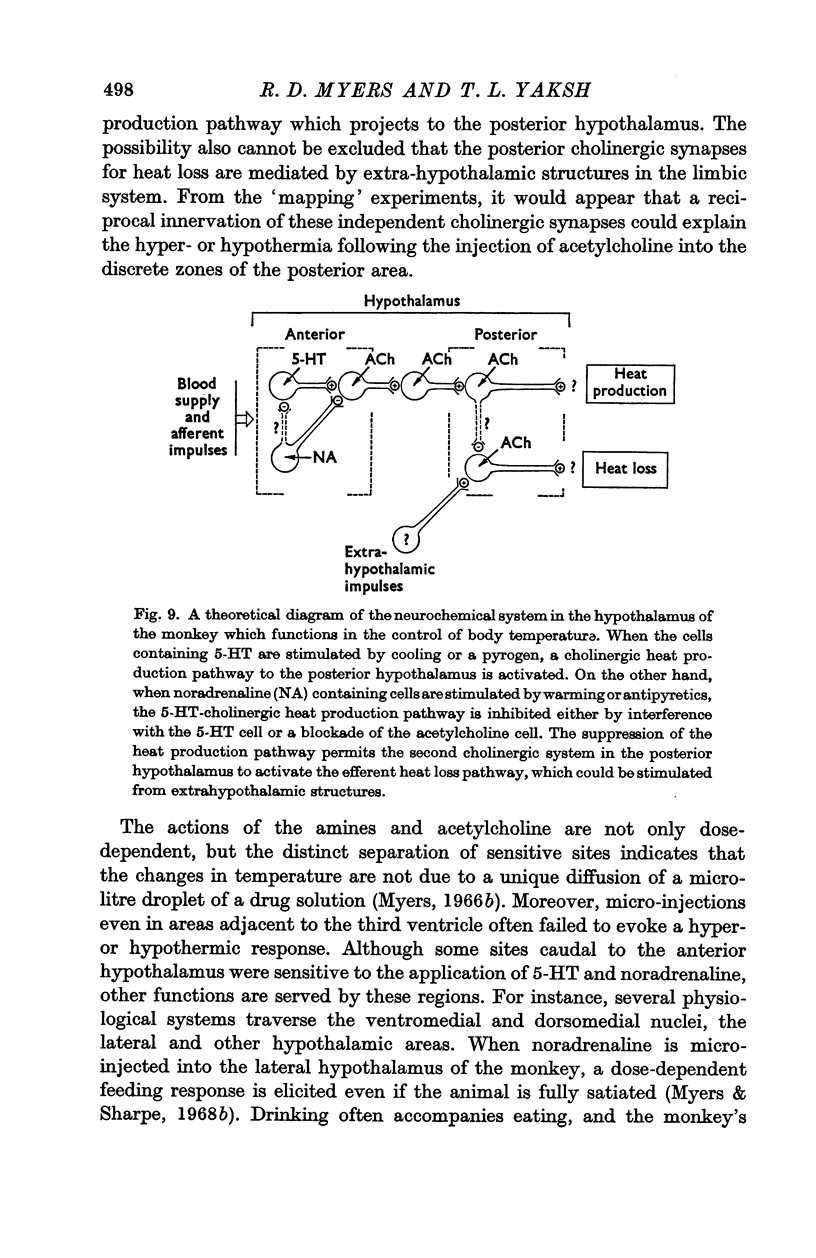
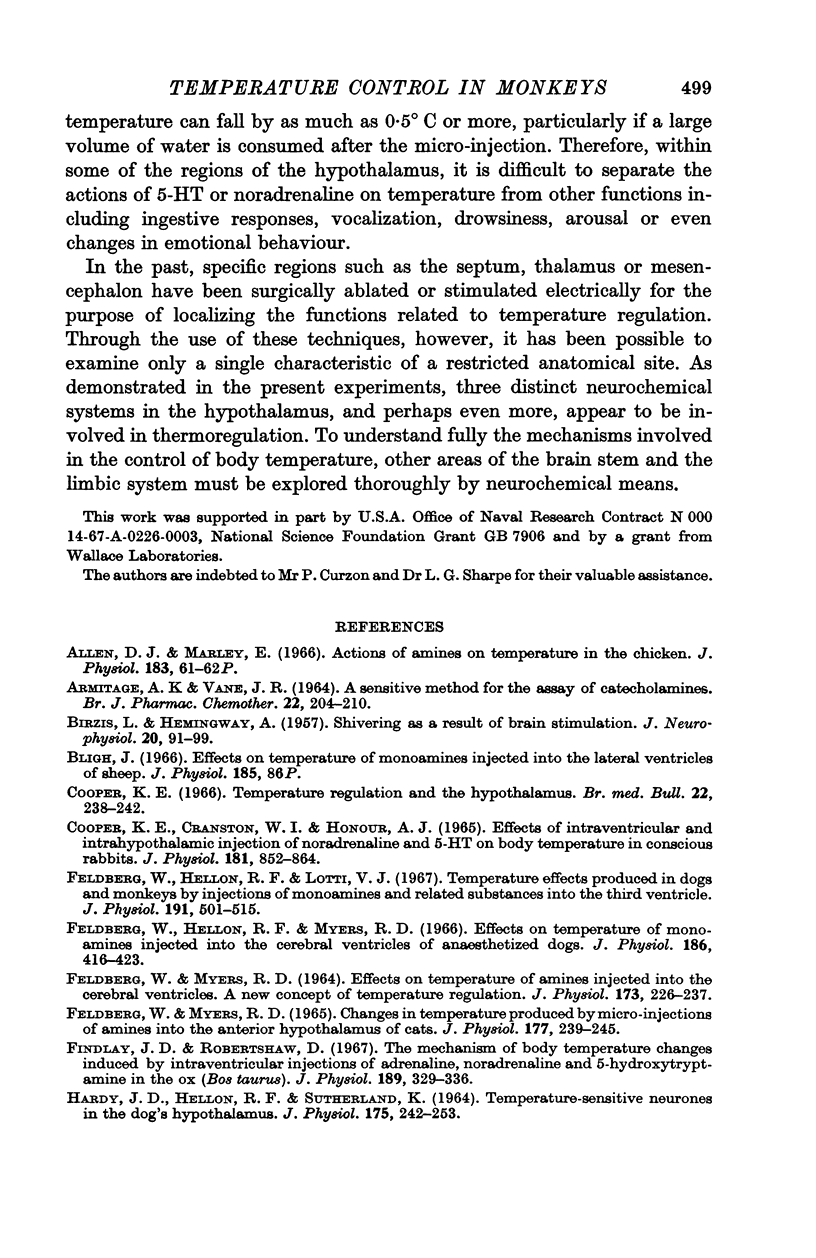
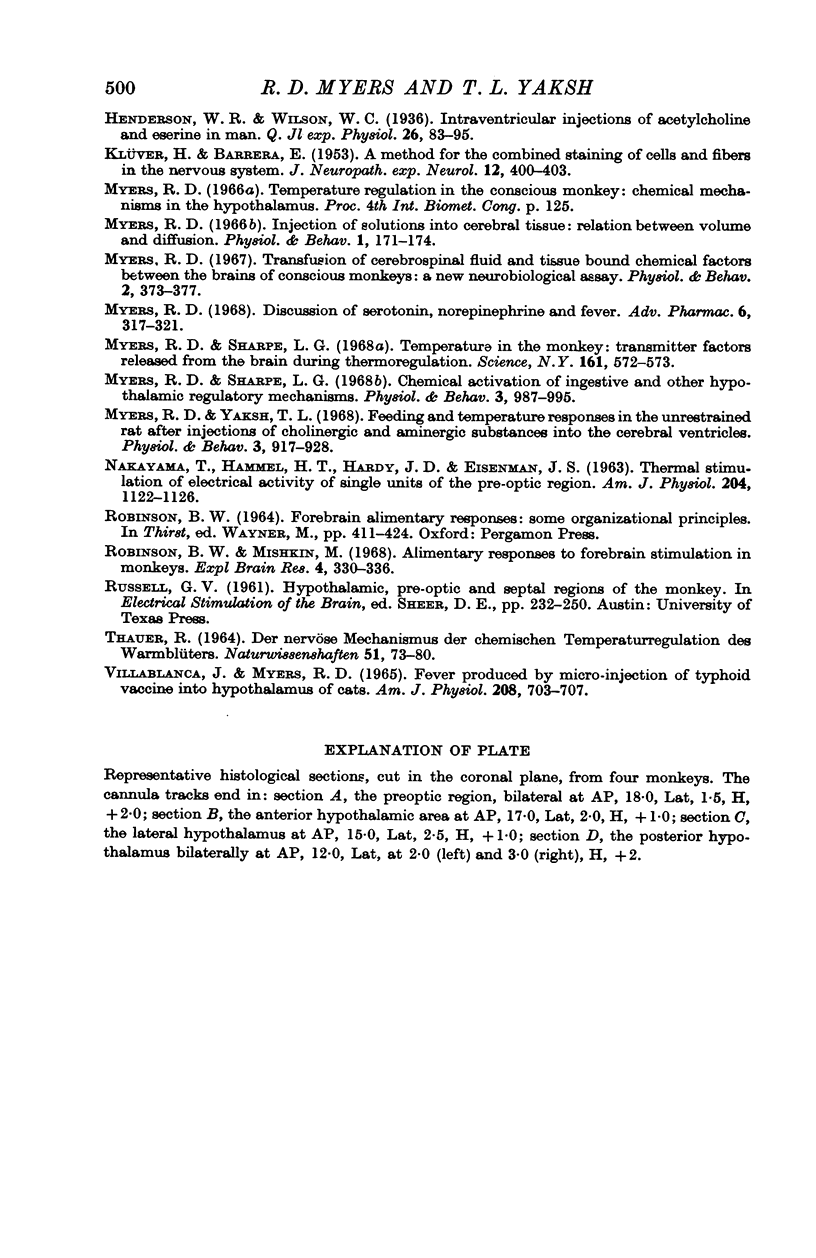
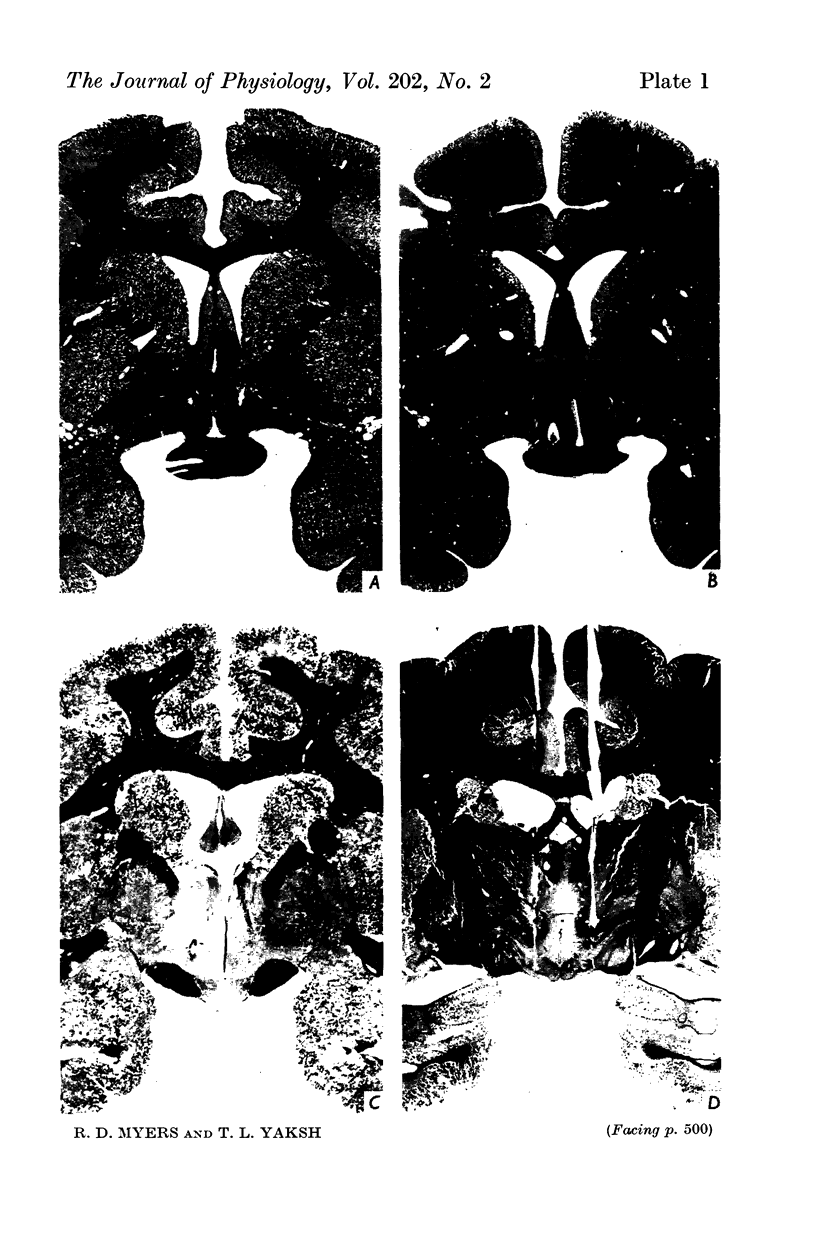
Images in this article
Selected References
These references are in PubMed. This may not be the complete list of references from this article.
- ARMITAGE A. K., VANE J. R. A SENSITIVE METHOD FOR THE ASSAY OF CATECHOL AMINES. Br J Pharmacol Chemother. 1964 Feb;22:204–210. doi: 10.1111/j.1476-5381.1964.tb01560.x. [DOI] [PMC free article] [PubMed] [Google Scholar]
- BIRZIS L., HEMINGWAY A. Shivering as a result of brain stimulation. J Neurophysiol. 1957 Jan;20(1):91–99. doi: 10.1152/jn.1957.20.1.91. [DOI] [PubMed] [Google Scholar]
- Cooper K. E., Cranston W. I., Honour A. J. Effects of intraventricular and intrahypothalamic injection of noradrenaline and 5-HT on body temperature in conscious rabbits. J Physiol. 1965 Dec;181(4):852–864. doi: 10.1113/jphysiol.1965.sp007801. [DOI] [PMC free article] [PubMed] [Google Scholar]
- Cooper K. E. Temperature regulation and the hypothalamus. Br Med Bull. 1966 Sep;22(3):238–242. doi: 10.1093/oxfordjournals.bmb.a070480. [DOI] [PubMed] [Google Scholar]
- FELDBERG W., MYERS R. D. CHANGES IN TEMPERATURE PRODUCED BY MICRO-INJECTIONS OF AMINES INTO THE ANTERIOR HYPOTHALAMUS OF CATS. J Physiol. 1965 Mar;177:239–245. doi: 10.1113/jphysiol.1965.sp007589. [DOI] [PMC free article] [PubMed] [Google Scholar]
- FELDBERG W., MYERS R. D. EFFECTS ON TEMPERATURE OF AMINES INJECTED INTO THE CEREBRAL VENTRICLES. A NEW CONCEPT OF TEMPERATURE REGULATION. J Physiol. 1964 Sep;173:226–231. doi: 10.1113/jphysiol.1964.sp007454. [DOI] [PMC free article] [PubMed] [Google Scholar]
- Feldberg W., Hellon R. F., Lotti V. J. Temperature effects produced in dogs and monkeys by injections of monoamines and related substances into the third ventricle. J Physiol. 1967 Aug;191(3):501–515. doi: 10.1113/jphysiol.1967.sp008264. [DOI] [PMC free article] [PubMed] [Google Scholar]
- Feldberg W., Hellon R. F., Myers R. D. Effects on temperature of monoamines injected into the cerebral ventricles of anaesthetized dogs. J Physiol. 1966 Oct;186(2):416–423. doi: 10.1113/jphysiol.1966.sp008043. [DOI] [PMC free article] [PubMed] [Google Scholar]
- Findlay J. D., Robertshaw D. The mechanism of body temperature changes induced by intraventricular injections of adrenaline, noradrenaline and 5-hydroxytryptamine in the ox (Bos taurus). J Physiol. 1967 Apr;189(2):329–336. doi: 10.1113/jphysiol.1967.sp008171. [DOI] [PMC free article] [PubMed] [Google Scholar]
- HARDY J. D., HELLON R. F., SUTHERLAND K. TEMPERATURE-SENSITIVE NEURONES IN THE DOG'S HYPOTHALAMUS. J Physiol. 1964 Dec;175:242–253. doi: 10.1113/jphysiol.1964.sp007515. [DOI] [PMC free article] [PubMed] [Google Scholar]
- KLUVER H., BARRERA E. A method for the combined staining of cells and fibers in the nervous system. J Neuropathol Exp Neurol. 1953 Oct;12(4):400–403. doi: 10.1097/00005072-195312040-00008. [DOI] [PubMed] [Google Scholar]
- Myers R. D. Discussion of serotonin, norepinephrine, and fever. Adv Pharmacol. 1968;6(Pt A):318–321. doi: 10.1016/s1054-3589(08)61187-4. [DOI] [PubMed] [Google Scholar]
- Myers R. D., Sharpe L. G. Temperature in the monkey: transmitter factors released from the brain during thermoregulation. Science. 1968 Aug 9;161(3841):572–573. doi: 10.1126/science.161.3841.572. [DOI] [PubMed] [Google Scholar]
- Robinson B. W., Mishkin M. Alimentary responses to forebrain stimulation in monkeys. Exp Brain Res. 1968;4(4):330–366. doi: 10.1007/BF00235700. [DOI] [PubMed] [Google Scholar]
- VILLABLANCA J., MYERS R. D. FEVER PRODUCED BY MICROINJECTION OF TYPHOID VACCINE INTO HYPOTHALAMUS OF CATS. Am J Physiol. 1965 Apr;208:703–707. doi: 10.1152/ajplegacy.1965.208.4.703. [DOI] [PubMed] [Google Scholar]



